I asked hundreds of CEOs, authors, speakers, entrepreneurs, business founders, journalists, and bloggers how they ensure a productive day. Here are the best 15 tips to help you on your journey, from managing your working day to developing a great work-life.
How to Have a Productive Day
The key elements of a productive day are planning, being clear about wording your daily goals, turning off mobile notifications, and focusing on what matters. We all have external distractions (your phone) and internal distractions (the Chimp). Utilize your team and optimize your tasks, and you will have a productive day.
1. Focus on What Matters Every Day
My simple tip is to read the book “Make Time: How to Focus on What Matters Every Day.”
Nobody ever looked at an empty calendar and said, “The best way to spend this time is by cramming it full of meetings!” or got to work in the morning and thought, Today I’ll spend hours on Facebook! Yet that’s exactly what we do. Why?
In a world where information refreshes endlessly, and the workday feels like a race to react to other people’s priorities faster, frazzled and distracted has become our default position.
But what if the exhaustion of constant busyness wasn’t mandatory? What if you could step off the hamster wheel and start taking control of your time and attention? That’s what this book is about.
Listen to Make Time on Blinkist
2. Manage Interruptions
Most productivity hacks focus on the person trying to concentrate and finish their work, but many don’t consider outside interference.
Whether it’s family, colleagues, or friends, setting boundaries is important to let people know you aren’t available to chat or hang out because you’re working. This is an especially prevalent problem for remote workers.
Working from home comes with many perks, but one of the downfalls is dealing with those at home who want to reach out to us whenever they feel like it.
To increase productivity, let others know you aren’t available to eliminate distraction. Put a “Do Not Disturb” sign on the door and turn on the Do Not Disturb feature on your phone so incoming notifications, calls, and texts are silenced.
Setting boundaries is crucial to your productivity, and the faster you set rules, the better.
Zakiyah Toor, Content Marketer @ IsItWP
3. Talk to the Chimp
Here is the toughest challenge.
Eliminating internal distractions is especially difficult because, according to Professor Steve Peters, a Chimp chattering away in your head gives you background stress and alerts you to any subconsciously perceived threats.
I have read this book thrice; it is an amazing insight into how we work.
It is real, and you can deal with it by talking to the Chimp.
The Chimp Paradox changed my life.
Barry D. Moore – CEO & Founder 3wise.com & LiberatedStockTrader.com
Get the Chimp Paradox on Blinkist (a 13-minute listen)
4. Plan for the Week
What has truly made a difference in managing my two businesses? Planning for the week and each day.
I take 15-20 minutes each Sunday to plan my week. I can set goals and priorities. Each night, I plan for the next day, which takes about 10-15 minutes. I can look at what I want to achieve for the week and build to that result daily.
Planning each night allows me to hit the ground running the next day. I can also quickly reprioritize as I gather new information during the day.
Also, I use my calendar. I block off time to get things done, including work time. If you have meetings all day, you’re guaranteed to have to take work home. Schedule time on your calendar. That way, your calendar reflects your priorities, and you get those things done.
One final tip: I make sure to tackle my most strategic projects during my peak productivity. Instead of checking off many things on my to-do list, I work on the most challenging tasks since I’m at my peak mentally. To figure out your peak productivity, see when you naturally hit your groove during the day. Block off that time so that it’s dedicated work time.
Suzanne Brown – CEO mompowerment.com, The Empowerment Guide to Work-life Balance book on Amazon
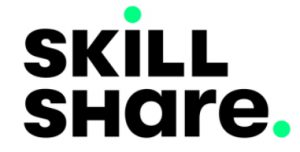
"When You Stop Learning, You Stop Living" SkillShare Makes Learning Easy. Skillshare Is Our #1 Rated Learning Platform With Great Lessons On:★★★★★ Creating: Photography, Film-Making, Music, Graphic Design & Coding ★★★★★ Building: Leadership, Communication, Entrepreneurship & Marketing ★★★★★ Thriving: Personal & Professional Development, Productivity, Time Management "Skillshare is like Netflix for learning. I take a course every time I need a new skill. With over 30,000 courses to choose from, I always have something to learn." Barry D. Moore - Founder: GreatWorkLife.com |
5. Wording Your Action Items
I worked in Digital Marketing for Turner Broadcasting and a few non-profits for years before deciding to return to school as a professional counselor. I started my practice as an entrepreneur in 2017.
I follow the Getting Things Done (GTD) methodology by David Allen and recently taught a workshop on it at a conference for private practice owners in Colorado.
One of my favorite productivity tips for reducing procrastination is in the wording of action items
I am very mindful of trying to write them in this format:
- action verb
- the object of that verb
- outcome
For example, “Call Sam for the most recent budget numbers.”
This is particularly important for large, ambiguous projects that don’t always have clear, self-evident next actions (or important projects you know you’re likely to put off).
Writing them this way forces you to clarify what physical action is needed to move them forward, but it also reduces resistance. You may have to take action when you scan your to-do list for the day or the week.
Often, items not written this way still require more thinking to clarify the outcome.
Brent Sweitzer LPC RPT is a professional counselor in private practice in Cumming, GA.
Read The Summary of Getting Things Done on Blinkist
6. Turn Off Notifications.
On your phone, on your desktop, everything. Noises, bounces, shakes, vibrations, everything.
Going into “Do Not Disturb” mode made me ten times more productive, and it’s such an easy fix. Just check things when you need to or at predetermined times throughout the day, and you’ll get much more done.
📖 Book Tip: How to Break Up with Your Phone: The 30-Day Plan to Take Back Your Life
Here are a few of my other productivity and efficiency tips:
- Reduce the number of meetings you have each week. For example, I no longer take calls outside of Tuesday and Wednesday. Most things can be done via email; no calls are needed.
- Have a strict meeting/call schedule and stick to it. Don’t make a 10-minute meeting into a 30-minute time waster.
- Get off social media. It’s killing time and creativity.
- Get a whiteboard in your room or office. Ideas come and go; make sure to get them all down.
Zlatko Bijelic – Founder Tako Agency Shopify web design & development
Listen to How to Break up with Your Phone on Blinkist
7. Get Small Doses of Satisfaction
As CTO, I’m usually involved in several projects and have been assigned many tasks to complete and review. So, sometimes, the work can be overwhelming.
I’ve been using the same two tips for several years, and I have to say sometimes I feel I can’t live without them! I have my own Kanban board in the office, apart from the big board used by the whole team.
The first thing I do (after getting my coffee mug) is to review my board to start thinking of the current tasks. My board is just next to my desk, so I can access it while sitting down. This is very important for me as I use the Kanban board dozens of times daily.
Whenever a task is assigned to me, I try to split it into as many tiny pieces as possible so that I can complete each in a few minutes or an hour max. Whenever I move a task from the “DOING” section to the “TEST” or “DONE” one, I immediately feel satisfaction.
That is the point.
I’ve found that spreading the pleasure received by completing a job in several small doses throughout the day makes me happier and more productive.
So, in summary:
Planning work ahead + Kanban boards + Small tasks = Self-satisfaction and performance improvement.
Jose Gomez, CTO & Technical Lead at Evinex.
Listen to Personal Kanban on Blinkist
8. Schedule Your Tasks
One of my favorite productivity tips is to schedule your tasks. Many people know what they need to get done each week but choose what they’ll work on when they sit down at their desks each day.
If you want to be more productive and get more done promptly, you should schedule all of your tasks for the week, no matter how small they are. For example, many content marketers create a calendar to plan what posts they’ll write each day, what day they’ll edit those posts, and so on.
This allows you to see what you need to get done each week at a glance, and it will help you stay on track. Scheduling your tasks in a calendar app makes it much easier to manage your time than working on whatever you feel like doing now.
Allison Hott, Content Marketer, OptinMonster
9. Use Inbox Zero
I recently read a Forbes article that cited that the average (office working) person spends 2.5 hours a day reading roughly 200 emails daily, of which 70% are irrelevant to them or their roles.
One of my biggest productivity hacks has been automating my email workflow to ensure I read and address only what I must on a given day. I aim to keep my inbox at zero by the end of each workday. This has improved my health (I had to get a stress coach years ago) and my ability to get things done.
Here are a few of my go-to tricks. First things first, do some manual work on the front to get our inbox into a respectable state:
- Apply new rules and filters
- Archive all emails that are more than seven days old
- Delete or Archive each email that has the term “unsubscribe” in it (which is typically a marketing email)
- Click on the down arrow in the Gmail search bar and open the Create Filter form
- in the field that marks “Has the words,” type “unsubscribe.”
- Select “Create filter with this search.”
- Check the “Delete it” box
- Select the “Create filter” option
Add these tools to level up your email organization and get your sanity back:
Slack – For internal communication with your team
Intercom – for external communication with partners/vendors
Followupthen – for free follow-up reminders, automated follow-ups when people don’t reply, and SMS reminders to yourself on important details (conference call login details, etc.)
Wesley Cherisien is an Orlando-based Investor and Entrepreneur; learn more about his latest projects at wesleycherisien.com
Listen to “Unsubscribe” on Blinkist
10. Utilize Your Team
“Innovation can often be the key to productivity, as well as a bustling office environment and an open-minded culture. I’ve found that team members can be most productive when they are allowed to be creative, disruptive, and think outside the box more often. A brainstorming meeting can be a good kickoff each week to get the ideas flowing.
Whether you have a new project coming up or are running out of time on an older one, having your team together in one room to support each other and lend the power of their minds is rewarding beyond belief.”
Alexandra Zamolo – Head of Content Marketing Beekeeper
11. Optimize Your Tasks
My favorite productivity tip is to schedule your tasks. Specifically, create a start time and an end time for them.
By scheduling when you start a task, you create what psychology calls an “implementation intention,” which makes it more likely you’ll avoid procrastination and start the task.
By scheduling when you stop a task, you create a mini-deadline that makes deadline-driven people work more effectively and avoid distractions. It also helps create a checkpoint, so if you can’t get the task done in the allotted time, you can consciously decide whether to keep working on it, change your approach, or switch to a more important task.
When I do this, I gain the benefit of working faster and staying more focused. It also helps me avoid getting too far down rabbit holes, such as those that can occur when I’m doing Internet research.
Trevor Lohrbeer is an entrepreneur and the Founder of Day Optimizer, a mobile and desktop app that helps people convert their daily to-do list into a daily schedule.
 Audiobooks Are Food for the Mind Inspiration, Education & Relaxation Have you discovered the joy of listening?★★★★★ Audible: Review Winner - Best for Price, Library Size & Original Content. ★★★★★ Blinkist: Review Winner - Best Audiobook Summary Service. ★★★★ Audiobooks.com: Best For Unlimited Audiobook Listening. "As a 10-year member of Audible, I have a library of 300+ audiobooks. The best thing is, with a few clicks, I can return any book within 12-months. I also subscribe to Blinkist; with 5,000 15-minute audio-summaries, I can consume knowledge and learn new concepts fast." Barry D. Moore - Founder: GreatWorkLife.com |
12. Have a Productive Week
I’ve been an entrepreneur for over ten years now. The biggest factors in my success have been productivity and organization, so I have much to say about making Mondays more productive, which you could add to your article.
To have a productive Monday, start the day before on Sunday night. Do a quick weekly planning session for 5-10 minutes every Sunday evening. This means that you can hit the ground running on Monday morning. You won’t end up wasting time deciding what you should be working on—you just do it.
In my early years as an entrepreneur, I used to start on a Monday morning by looking at the emails that had come in overnight and working through them. This killed my productivity on a Monday, as I’d inevitably end up responding to low-value emails. By implementing a quick planning session on Sunday evening, I’d know exactly what I was supposed to be working on and could just wake up on Monday morning and start working on that.
Another point on top of this is around priorities.
“Pick the hardest task of that day and complete it before doing anything else.”
Even if you do nothing else that day, you will still make good progress and be productive this way.
It also helps avoid procrastination. Many people do small or unimportant tasks to make it feel like they are making progress when they aren’t.
For years, I focused on the small, quick tasks first. This meant I kept putting off the more challenging tasks, which tend to impact the business the most. When I switched to doing the hardest task first, my productivity skyrocketed.
Scott Watson, Co-Founder of Wickfree Candles
Get Eat That Frog Summarized by Blinkist
13. A Tidy Desk is a Focused Mind
Messy tables, scattered stationery, unadjusted chairs, uneasy keyboards, or mouse problems can interrupt one’s effectiveness towards work. I make sure that my workplace is arranged nicely and appropriately. I have a specific pattern to place things on my desk, like what I put on my right and left. I prefer to keep my personal belongings other than my work desks, such as my handbag, keys, or shades.
What benefit did you realize by using it?
First, it keeps me peaceful and fresh when I look at my surroundings clutter-free. I remain more focused on my work as all my necessities are nicely placed near me. Secondly, I always have space for any urgent workload if my employer comes with piles of files. I enjoy my work for being organized.
CJ Xia – VP of Marketing & Sales at Boster Biological Technology.
14. Build Personal Relationships
Young people easily get demotivated – especially in large corporate organizations. Free coffee, office music, and motivational quotes will only get you so far.
My favorite productivity tip is personal bonding.
Developing a personal relationship with my young team bolstered productivity. They felt motivated and responsible, and they strove to achieve things.
Of course, in a large organization with many employees, it might be difficult or impossible to form a personal relationship. We recently started using employee engagement software (Clarity Wave) to measure and improve employee engagement, and we noticed a huge improvement in team mood and productivity.
Plamen Beshkov – PR Specialist, Employer Happiness Expert @ Oliver Wicks
15. Use Keyboard Shortcuts
I head the Marketing team here at Fueled, and it’s my responsibility to ensure the team works as productively as possible. I’d love to share some tips and hacks I’ve learned!
As simple as it sounds, my biggest productivity hack is using and learning as many keyboard shortcuts as possible.
During my first few weeks at Fueled, I sat next to my manager, who would take my trackpad away and force me to learn my keyboard shortcuts. Although this seemed cruel then, it made me learn my keyboard shortcuts and practice and use them.
By using my keyboard shortcuts in Google Docs, Gmail, Chrome, Slack, and MacBook, I can confidently say that I have become an incredibly productive and efficient worker. I highly suggest managers train their employees to use keyboard shortcuts.
Ciara Hautau – Lead Digital Marketing Strategist @ Fueled
Final Thoughts
These are 15 of the best ideas and thoughts on productivity we have received. Do you have a better tip or hack? Submit your thoughts in the comments section below, or contact us here.
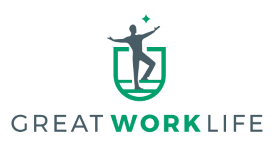
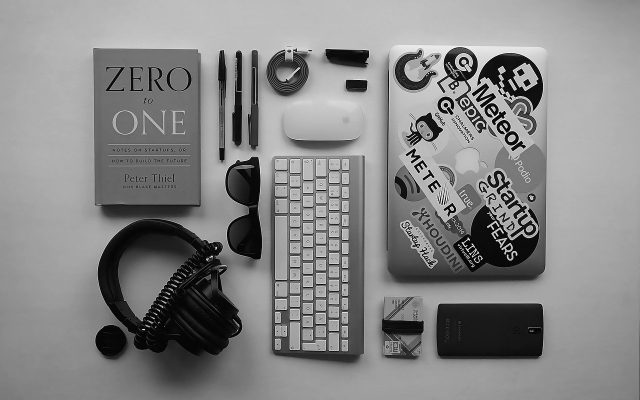





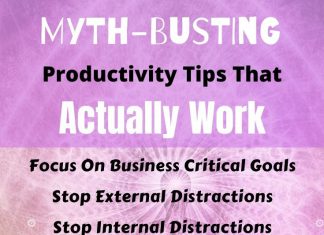
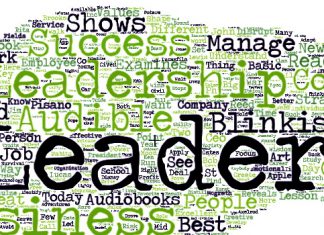
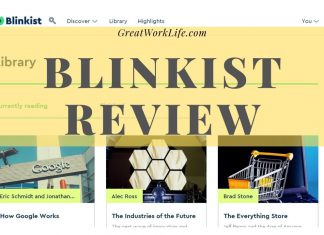

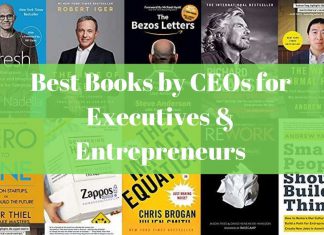
Avoiding distractions and using shortcuts is very useful (at least speaking from a perspective of a graphic designer). I also like to start my day by checking what I should do. I have all my tasks listed in an app – kanbantool.com . So all I need to do is check my kanban board to have a plan of the day, see what needs to be done asap, what can wait etc. I find it very helpful.
For me to have a productive day, I utilize TMetric. It records my working hours, monitors my actions, and shows my productivity directly on the timeline, making it simpler for me to recognize performance peaks and modify my workload to prevent squandering time and energy.